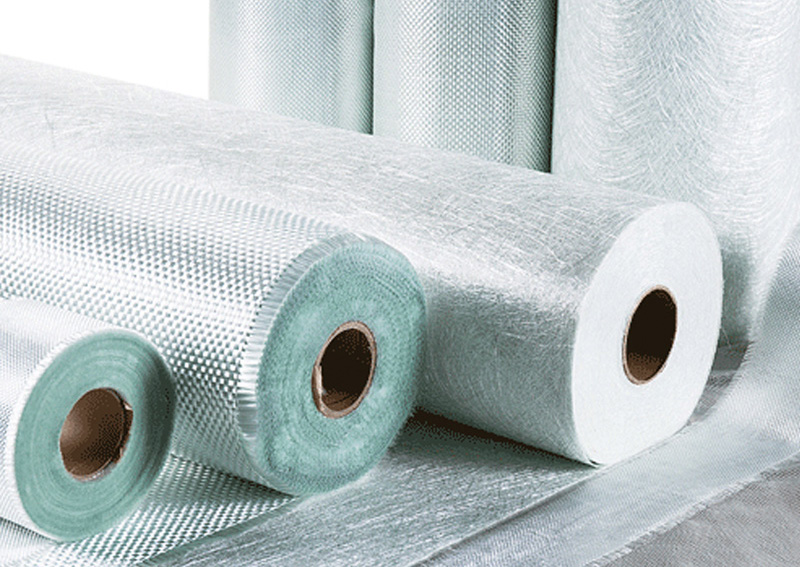E-glass woven roving production process
The raw material of E-glass woven roving is alkali-free fiberglass roving. The main processes include warping and weaving. The specific processes are as follows:
① Warping: The raw material alkali-free fiberglass roving is processed into a fiberglass bundle required for weaving by a warping machine, which is used as the warp thread for textile in the subsequent process.
② weaving: This process mainly weaves alkali-free fiberglass roving into checkered cloth through a loom. In order to control the surface width during the weaving process, the rapier loom automatically cuts through a matching knife.
③ Finished product: After winding, the grid cloth is the finished product and is sent to the finished product warehouse.
Stitched chopped strand mat production process
① The polyester silk and weft yarn (zonal alkali-free fiberglass roving) are organized according to the pattern and prepared by reeds, cutting and dispersing, and seaming. The seaming felt is made.
② Lead, reeds, cut off dispersion, adjust tension, and evenly lay the layers: the alkali-free fiberglass plied yarn is passed through the weft frame and transmitted to the inside of the machine, evenly divided into loose felt of 3~5cm length, and then the loose felt is evenly spread, according to the adjustment of the speed of falling felt, to achieve the overall weight of the final product.
③ Knitted seam edge: Through the knitting of polyester silk, the evenly layered loose felt is locked and fixed into a whole glass fiber knitted seam edge felt.
④ Horizontal cutting, winding, packaging and storage: After the stitched chopped strand mat is cut to the appropriate width by horizontal scissors, the packaging is checked and stored for sale after falling off the shaft.
Biaxial combo mat production process
① The polyester yarn, warp yarn (warp alkali-free fiberglass roving), and weft yarn (weft alkali-free fiberglass roving) are organized according to the pattern and prepared by reeds, shuttles, tension adjustment and other processes to form a biaxial combo mat.
② Lead, reed, shuttle, and adjust tension: After the polyester yarn, warp yarn, and weft yarn are leaded, reeds and shuttle separately, and the tension is adjusted to the appropriate level.
③ Arrangement and warp knitting: The biaxial warp knitting process is mainly to buckle the warp leads on the warp frame into the nose for longitudinal arrangement. One side of the biaxial warp knitting machine passes through the weft shelf, shuttling the weft yarns into the nose for horizontal arrangement.
④ Winding, packaging and storage: After the woven biaxial combo mat is rolled, it is packed and stored.
Post time: Sep-09-2024






